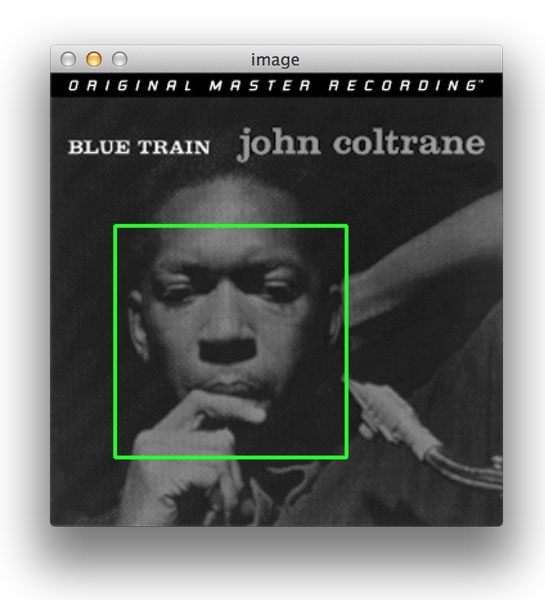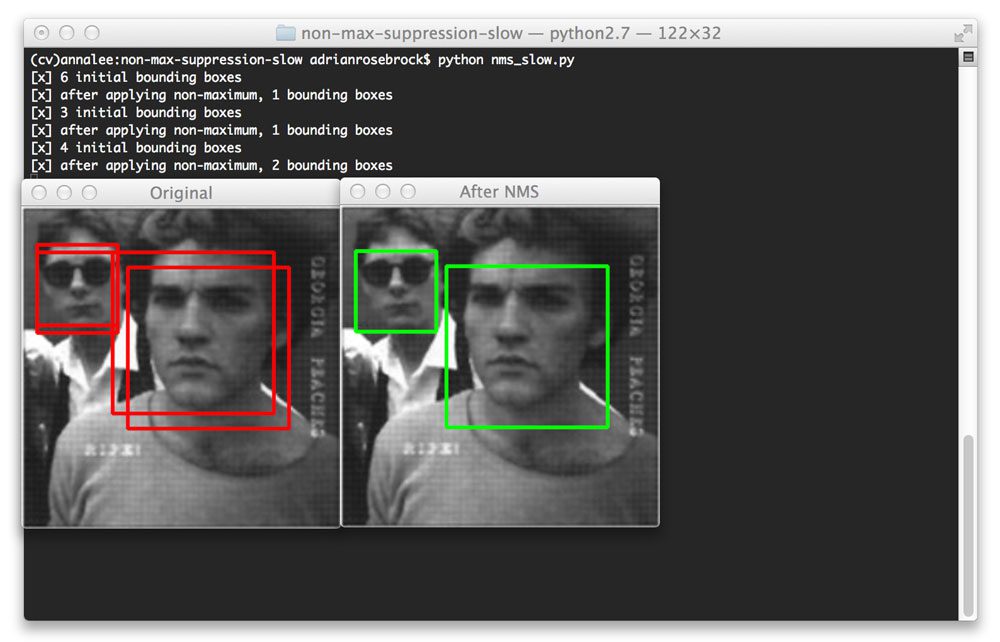OpenCV and Python versions: This example will run on Python 2. Before we get starte if you haven’t read last week’s post on non - maximum suppression, I would definitely start there. To fix this situation we’ll need to apply Non-Maximum Suppression (NMS ), also called Non-Maxima Suppression.
When I first implemented my Python object detection framework I was unaware of a good Python implementation for Non-Maximum Suppression, so I reached out to my friend Dr. Tomasz Malisiewicz, whom I consider to be the “go to” person on the topic of object detection and HOG.
Typical Object detection pipeline has one component for generating proposals for classification. Proposals are nothing but the candidate regions for the object of interest.

Do you happen to have a 1D non - maximum suppression algorithm written in Python. I need it for making a Canny edge detector in Python using scipy that takes as input a 1D intensity vector. Moreover, the gradient intensity level is between and 2which is not uniform. The edges on the final result should have the same intensity (i-e. white pixel = 255).
Ideally, the final image should have thin edges. Thus, we must perform non - maximum. Install: pip install nms. Non - Maximum Suppression. There are not any tests. I am working on little project of mine, where I do some basic motion detection.

As it leads me to some boundary boxes, with large and small ones, I thought about using the non - maximum suppression algorithm to reduce the boundary boxes to 1. One indispensable component is non - maximum suppression (NMS), a post-processing algorithm responsible for merging all detections that belong to the same object. The de facto standard NMS algorithm.
While essential object detection ingredients such as features, classifiers, and proposal methods have been extensively researched surprisingly little work has aimed to systematically address NMS. We propose a convnet designed to perform NMS. I found some NMS variants below. What do you guys think ? Which one do you guys prefer to use ? NMS, Fitness NMS, cluster-NMS, Adaptive NMS, R2NMS, GreedyNMS, GossipNet NMS.
I have removed non maxima regions from the vector "bbox". But when I plot it shows the regions which still contain non maxima regions. If I measure the bbox. Why its not able to remove all the non maximas ? Non-maximum suppression is an integral part of the ob-ject detection pipeline.
First, it sorts all detection boxes on the basis of their scores. A scalar integer Tensor representing the maximum number of boxes to be selected by non max suppression.
A float representing the threshold for deciding whether boxes overlap too much with respect to IOU. A name for the operation (optional). GitHub Gist: instantly share code, notes, and snippets. In this algorithm we propose additional penalties to produce more compact bounding boxes and thus become less sensitive to the threshold of NMS.
The ideal solution for crowds under their pipelines with greedy NMS is to set a high threshold to preserve highly overlapped objects and predict very compact detection boxes for all instances to reduce false positives. This example demonstrations how to use efficient algorithms inside of BoofCV to quickly find extremes. It is mainly achieved in two phases: It selects the bounding box which got the highest confidence (i.e probability).
NMS uses a pre-defined threshold algorithm to suppress the bounding boxes while their overlaps are not.
Aucun commentaire:
Enregistrer un commentaire
Remarque : Seul un membre de ce blog est autorisé à enregistrer un commentaire.